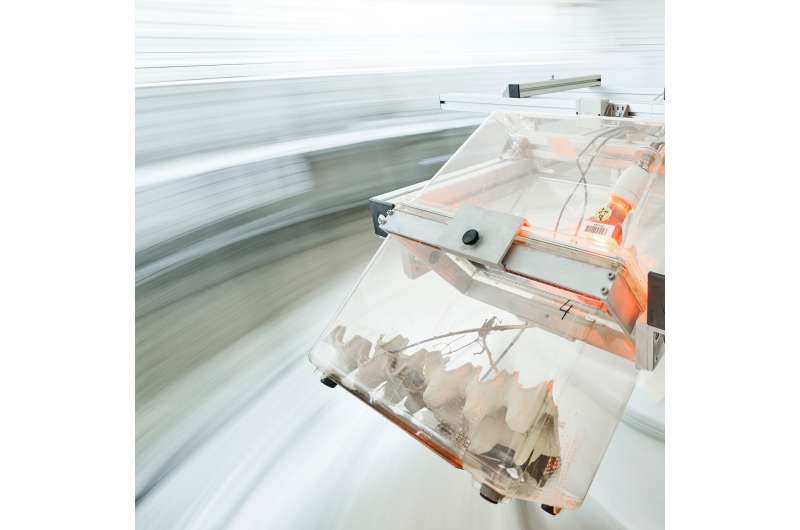This article has been reviewed according to Science X's editorial process and policies. Editors have highlighted the following attributes while ensuring the content's credibility:
fact-checked
peer-reviewed publication
proofread
Study shows exoskeletons of insects become stronger when raised under higher mechanical load

Scientists from the Hochschule Bremen (HSB)—City University of Applied Sciences used a centrifuge to show that the exoskeletons of insects become stronger when they are raised under higher mechanical load. This fundamental knowledge is important to better understand the evolution of cuticle, bone and many biological materials.
A typical feature of most biological materials is their ability to react to mechanical load. For instance, trees swaying in the wind fortify themselves by adding more wood to withstand the forces. Similarly, the skeletal structures of humans and other vertebrates possess the ability to both add or remove bone material, optimizing their mechanical properties.
Most animals on Earth, however, have a cuticle exoskeleton. So far it was not known whether these exoskeletons can also react to mechanical load, or if vertebrate bones and wood are evolutionary unique in this respect.
To answer this fundamental biological question, scientists from the Biological Structures and Biomimetics Workgroup at the Hochschule Bremen—City University of Applied Sciences (HSB) raised locusts for several weeks in a large centrifuge or equipped them with small custom-designed "backpacks." The researchers then measured the stiffness of the legs and used X-ray microtomography to analyze the cuticle's structure.
The study was published in royalsocietypublishing.org/doi … .1098/rspb.2023.2141>Proceedings of the Royal Society B: Biological Sciences.
"For the first time we were able to directly show that the exoskeleton of insects is able to react to mechanical load," said Dr. Karen Stamm, who performed the study at Bionik-Innovations-Center (BIC) of HSB as part of her Ph.D. research. "After two weeks in the centrifuge at three times their own body weight, the locusts legs were stiffer and the structure of the cuticle different to the locusts living at normal gravity."
"The ability to adapt to mechanical load has so far only been known for bone endoskeletons and plants," said Prof. Jan-Henning Dirks, head of the Biological Structures and Biomimetics Workgroup at the HSB. "Our results show that our bones are not unique in their ability to react to mechanical load. This fundamental knowledge can help us to better understand the evolutionary pathways of many biological materials and skeleton systems."
More information: Karen Stamm et al, Insect exoskeletons react to hypergravity, Proceedings of the Royal Society B: Biological Sciences (2023). DOI: 10.1098/rspb.2023.2141
Journal information: Proceedings of the Royal Society B
Provided by Hochschule Bremen





















